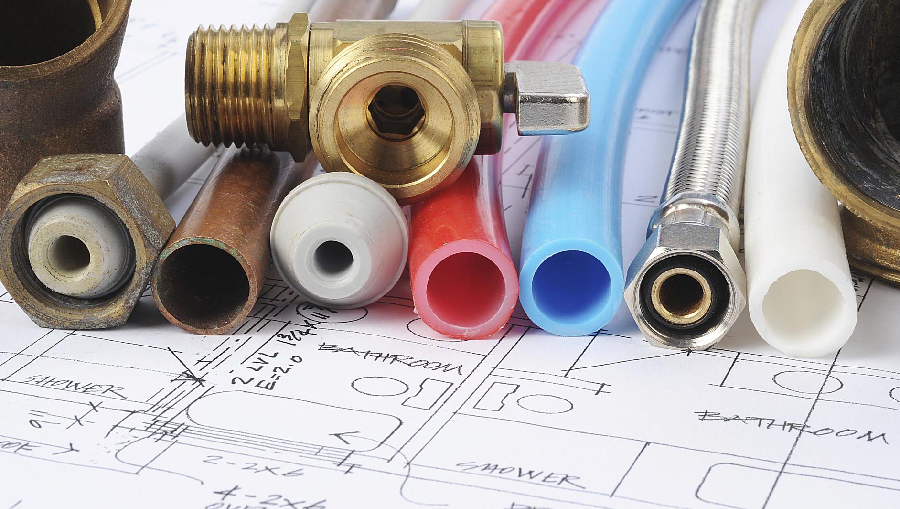
Industrialization, improvements in technology, and modernization have improved many aspects of human living. We have come a long way from constructing houses out of mud and stone and have now entered an era where construction materials are produced to maximize their performance and durability. How we build houses and the kind of materials that we use have changed from back then.
A basic amenity required by homes is plumbing. Plumbing ensures the continuous flow of water in the household for cleaning, heating, and sanitation. It is composed of a system of pipings, fittings, tanks, and other apparatuses. Piping systems are complex and are a hassle to deal with if you don’t get them right the first time.
That’s why in designing a plumbing system, it is critical to use the most suitable material. You will still have to phone a plumber for emergencies from time to time, but it does make sure that you don’t get plumbing issues often.
The two main types of pipes that have been used in recent decades are copper and plastic pipes. The different kinds of plastic piping currently in common use are PEX (cross-linked polyethylene), PVC (polyvinyl chloride), and CPVC (chlorinated polyvinyl chloride) pipes. Both types of pipes have their own set of pros and cons. But here, we argue why plastic piping has gained more traction since it became commonplace in usage during the 1990s.
Plastic piping is more durable.
Plastic pipes are thick, flexible, and lightweight. Plastic pipes can last up to 40-50 years with no difficulties if built properly and not exposed to ultraviolet light, usually unneeded due to indoor use.
Plastic pipes also tend to expand when the weather is hot and contract when the weather is cold. They can do this due to the inherent qualities of plastic and the fact that they are engineered to do so. This means that plastic pipes are heat-resistant and can expand when need be, preventing unnecessary pressure from building up within the pipes when the temperature changes.
They are also not prone to corrosion compared to copper pipes since they are non-metallic. Acidic water does not affect plastic pipes at all. Copper pipes, however, tend to corrode and have pinhole leaks when water is at a pH below 7 and would have to use a pH neutralizer to level back water acidity.
Due to the relative thickness of plastic pipes, they create less sound in high-pressure systems and are pressure-resistant compared to copper pipes.
It is cheaper compared to its metallic counterpart and easier to install.
People often debate on their overall costs due to the pricing of pipes and their installation. Some would say that plastic pipes are expensive but have cheaper installation or that copper pipes are cheaper but have higher installation prices.
However, it is a fact that copper prices are steadily rising due to limitations in availability and demand in other industries. On the other hand, plastic pipes can be expensive at first glance, but technology allows them to be engineered and produced faster, efficiently, and cheaper without compromising quality.
Plastic pipes are known to take 40% less time to install than copper piping in general. Copper pipes can be put in tiny areas, but they always necessitate specific cutting equipment and soldering. Copper installation is limited to professionals exclusively. Professional plumbers are also necessary for the installation of plastic pipes, particularly for larger jobs or issues. But if it’s only a few joints or fittings that need adjustment, anyone can be capable of doing pipe repairs on their own with a bit of informational assistance.
They are not as prone to leaking.
These plastic pipes come in a variety of colors for hot, cold, and universal water lines. They are heat resistant and need the fewest fittings, resulting in fewer leaks at joints and seams. They are, however, very vulnerable to UV damage and should never be exposed to the sun. PEX can also cause strange tastes or odors in the water, as well as leach chemicals.
Plastic pipes can withstand water pressures of up to 10-bars. The amount of pressure applied to the copper pipe is determined by how tightly the fitting is fastened. In contrast, copper pipes can sustain only up to 5-bars of pressure.
Copper pipes split easily than plastic pipes because they are easily affected by pressure, corrosion, temperature, and water acidity.
If you already have copper pipes installed in your plumbing system, there is no need to replace them as long as they still work well. But if you are considering rebuilding or upgrading, plastic pipes are the better option.
Meta title:The Advantages of Plastic Piping
meta desc: Plastic pipes have gained popularity over copper piping in recent decades. Here’s why.
